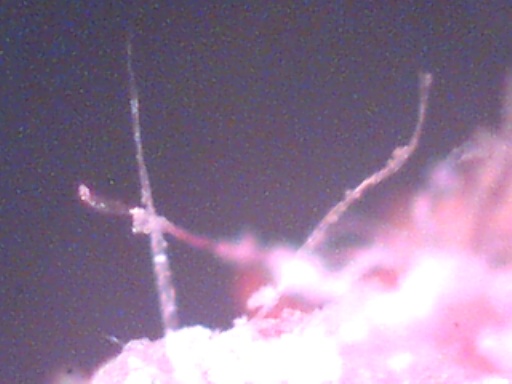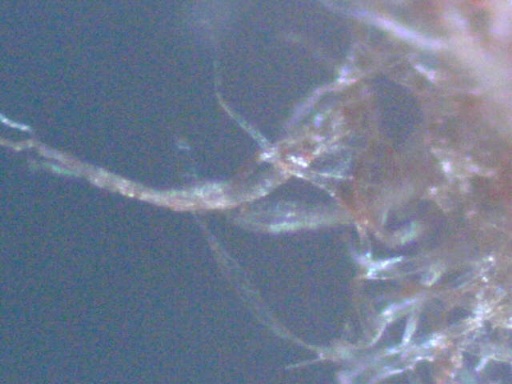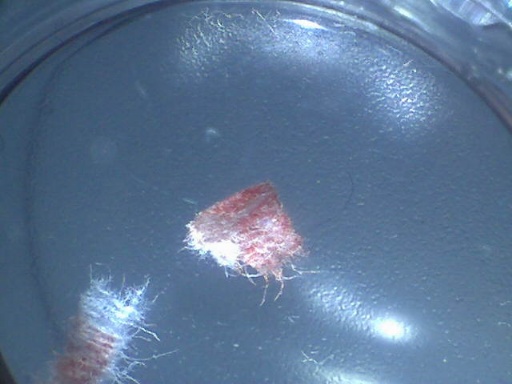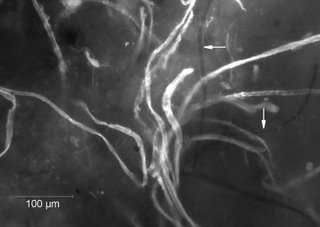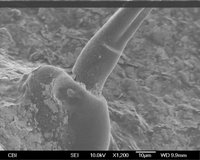Is it SCABIES?
Or is it really an Unidentified Parasite?
Or a total rip-off?
The site http://www.cure-skin-parasite.com/ is preying on the fears of people who think they have something along the lines of Morgellons.
They have a ridiculously long home page – fully of testimonials like
” Doctors said I was delusional and I knew what I had.. Those things hurt and I couldn’t sleep! I had spent literally thousands of dollars on doctors & treatments that didn’t work! I can finally say, after using your products and doing everything you suggested, I am finally parasite free! ”
I’m convinced!
Unfortunately they have such a wide range of products for sale, that I don’t know what to buy. Looks like the best value is the “Human Mite and Unidentified Parasite Family Superpack”, recently reduced from $339.95 to $199.95. Sweet! What do you get?
2-8oz. Mitactin Spray
1-8oz. PuraCleen Healing Spray
1 Gallon Rejuvenating Body Wash and Skin Conditioner
1 Gallon PuraCleen Disinfectant Cleaner
1-Free 2oz.Mitactin Salve
1-Mud Pack
Okay – let’s look at their “Mitactin Spray”, normally $39.95 for 8oz (or $199.95 for a Gallon). The ingredients are listed as : “Nonionic and anionic surfactants “. A surfactant is a “wetting agent”, something that reduces the surface tension of liquids. Soap is a surfactant. Nearly all cosmetic creams contain one or more surfactant. How is this special? What does it do to the mites that any other soapy spray would not? Can’t I just make my own from water and some 2-in-1 shampoo?
Solution of nonionic and ionic surfactants is used in the pesticide industry as “Adjuvants” – an additive to make the pesticide “wetter” and to spread over the surface of plants more. Perhaps that’s where they got the idea from – pesticide without the harmful chemicals!
Next Up: The PuraClean Healing spray 8oz for $39.95 – now this actually has an active ingredient: Benzalkonium chloride. Yup, just one – and it’s the same active ingredient as is in several other products, like the ringworm cream, and the skin burn cream. What is Benzalkonium chloride? It’s “A yellow-white powder prepared in an aqueous solution and used as a detergent, fungicide, bactericide, and spermicide“. According to Wikipedia it “must not be mixed with anionic surfactants” Whoops! Better not use it with your Mitactin spray! And don’t use soap!
But benzalkonium chloride is at least known to work, such solutions are “rapidly acting anti-infective agents with a moderately long duration of action. They are active against bacteria and some viruses, fungi, and protozoa.” – nothing about mites though. Probably covering the bases.
Bactine is a benzalkonium chloride spray. About $20 for 8oz. You can get 32oz for $6. It’s sold as “Foot Rot and Ringworm Spray for cattle,horse, dogs”. Some people are allergic to benzalkonium chloride.
Moving on, what do we get in our “1 Gallon Rejuvenating Body Wash and Skin Conditioner”? The “active ingredient” is again benzalkonium chloride, but we also have “hydrooxyethyl cellulose, propylene glycol, cetyl trimethyl ammonium chloride, octoxynol – 9, methyl paraben, citric acid, fragrance. ” All these are normal inactive ingredients in cosmetic creams, except for octoxynol-9 which is a spermicide and an inhibitor of various pathogens. Huh? Sounds like an active ingredient to me. It’s actually a non-ionic surfactant, perhaps as used in other potions.
Then: “1 Gallon PuraCleen Disinfectant Cleaner” ($69.95) – Purified water, cetyl trimethyl ammonium chloride, fragrance, color. and an active ingredient: Benzalkonium chloride. Just like the other things we got in the pack.
A note on “cetyl trimethyl ammonium chloride” aka Cetyltrimethylammonium chloride aka CTAC, aka cetrimonium chloride (and lots of other names) It’s a cationic surfacant. Calling it CTAC is a bit obscurantist, as it’s better known as Cetrimonium chloride. It’s generally used in conditioners.
If you really want some of the magic ingredient, Benzalkonium chloride, it’s generic Zephiran, you can get it extra strength at Trask Research – where they make 1:750 aqueous solution. One gallon for $99.95. More expensive? but wait – for dermatology applications up to “oozing and open infections”, you can use a 1:5000 solution. So that makes about 6.5 gallons, or just $15 per gallon! Yay! And a gallon is $640 worth of PuraClean Healing spray!
Finally the feebies – Micatin Salve is like Micatin spray, but as a salve, exact same ingredients. The “Mud Pack” contains “Diatomacious Earth, Rosemary Oil, Tea Tree Oil, & Antimicrobial formulas” and is “Manufactured in our FDA approved lab”
What does the FDA Recommend for lice?
http://www.fda.gov/cder/drug/infopage/lindane/lindaneQA.htm#14
Scabies:
Crotamiton cream and lotion 10% (Eurax) – Rx
Permethrin cream 5%, (Acticin, Elimite) – Rx
Permethrin cream rinse 1% (Nix) – OTC
Head and pubic lice:
Malathion lotion 0.5% (Ovide) – Rx
Pyrethrum extract 0.33% with piperonyl butoxide shampoo (Rid) – OTC
Permethrin cream rinse 1% (Nix) – OTC
Hmm, DermaTech has none of the above.
